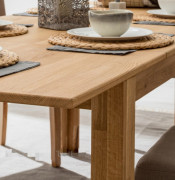Foam vs. Cold Foam: Which Material is Better?
Foam vs. Cold Foam: Which Material is Better?
History and Modern Technology
The term "foam" originated in Soviet times when this material was widely used in upholstered furniture and had fairly uniform qualities. Today, technology has advanced significantly, and traditional foam has been replaced by various modern foams, such as cold foam.
Features of Cold Foam
Cold foam is a high-quality material available in various density levels, denoted by the letters HR (for "High Resilience") followed by a number indicating the density and weight per cubic meter. The higher the value, the denser and more durable the foam; examples include HR35, HR44, and HR55. This material is often used in sofas and mattresses as it ensures longevity and a high level of comfort.
Choosing the Right Material for Furniture
Manufacturers typically use foam with a density starting at HR25 for furniture. Low-density, cheaper foam wears out faster, whereas higher-density foam, marked HR35 and above, is more durable and comfortable. The difference is noticeable right away—quality foam feels more resilient and pleasant, while porous, lower-density foam compresses more quickly and loses its shape.
Cold Foam Production Process
Cold foam is made by pouring a liquid mixture into molds, heating it in an oven, and then allowing it to cool for a long period. The longer the cooling process, the higher the quality and density of the foam. Oils, like linseed oil, are often added to improve the material’s softness and elasticity.
Enhanced Comfort and Quality with Cold Foam
Cold foam is now widely used in upholstered furniture, with its quality directly impacting the comfort level and price of the furniture. When choosing a material, consider usage frequency, desired firmness, and budget to select the most suitable option for your space.


